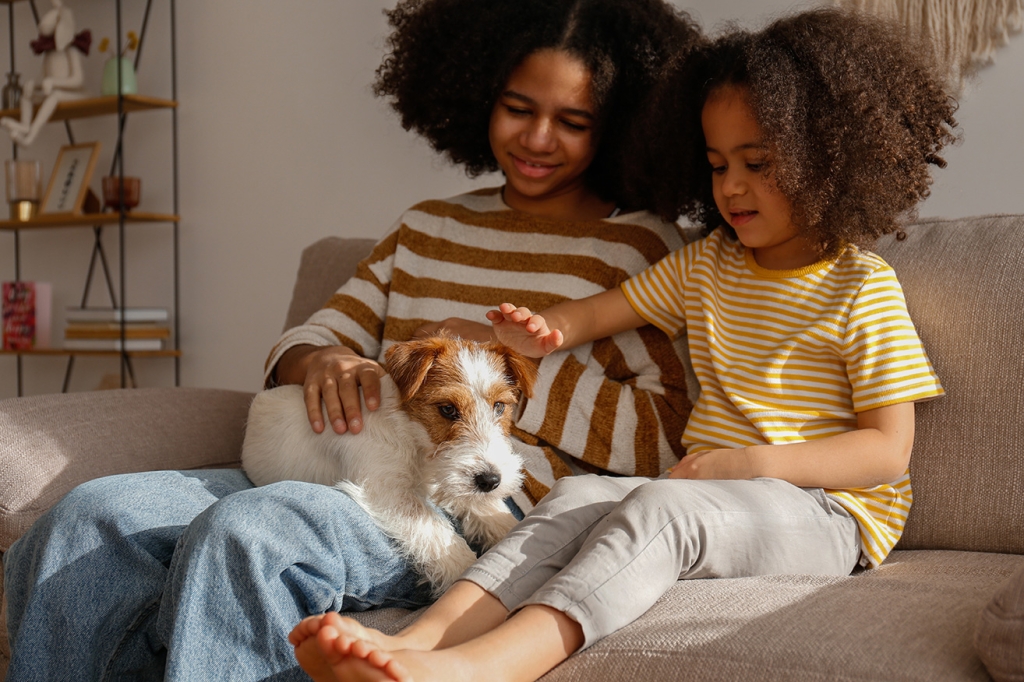
Dogs, children and oxytocin: Breakthrough study reveals interaction with dogs leads to higher oxytocin levels in children
Dogs, Children And Oxytocin: Breakthrough Study Reveals Interaction With Dogs Leads To Higher Oxytocin Levels In Children
A ground-breaking study offers a biological explanation for the benefits of the child-dog bond: effects on oxytocin levels. Until now, little has been known about the biological mechanics at work during human and animal interactions (HAI).
The study by Gnanadesikan et al, published in Psychoneuroendocrinology, is the latest in a long line of HAI research supported by the Waltham Petcare Science institute (WPSI). But it offers fresh insights into the biological benefits of these interactions for children. As the researchers say themselves:
“To our knowledge, this study provides the first evidence for an effect of affiliative social interactions with dogs on oxytocin concentrations in children.”
In the study, Effects of human-animal interaction on salivary and urinary oxytocin in children and dogs, oxytocin levels were recorded in children and their pet dogs. Oxytocin, commonly referred to as ‘the love hormone’, is associated with positive emotions, the reduction of stress and the formation of social bonds.
Among other measures, oxytocin levels were tracked in both the children’s and dogs’ urine and saliva before and after they interacted. This is an innovative approach for HAI research: while previous studies have examined the benefits of HAI to either humans or dogs, this is one of few to simultaneously investigate the benefits to both.
Interactions took place under two conditions: children interacted with their pet dog and an unfamiliar dog (a trained therapy dog). Oxytocin levels were also measured as the children engaged in solitary play.
After analysing the results, Gnanadesikan et al found:
- Interaction with dogs led to higher oxytocin levels in children compared to solitary play.
- Both familiar and unfamiliar dog interactions had this effect.
- Interactions with familiar children may similarly stimulate oxytocin release in dogs. Dogs’ cortisol concentrations also decreased markedly from before to after these interactions.
“Collectively, our results support the hypothesis that oxytocin pathways may shape and respond to social interactions between children and dogs, highlighting an important role for companion animals in child development.” Gnanadesikan et al
Vanessa Ashall, Human-Animal Interaction (HAI) Technical Leader at WPSI, concluded that:
“As well as adding new, interesting findings to the growing body of research on human-animal interactions, this study goes one step further to provide biological evidence of the potential role that dogs can play in children’s social and emotional growth, and the mutual benefit these interactions have for pet dogs too.”
Read more: https://www.waltham.com/oxytocin-children-and-dogs
More from Waltham Petcare Science Institute
- New DNA discovery identifies specific genetic link to painful skin condition in French Bulldog and Boxer dog breeds for the first time
- Mars’ Waltham Petcare Science Institute to host symposium on pets and human mental health and wellbeing at ISAZ 2025 conference
- Two new studies highlight the role of human-animal bond in improving mental health of older people
- Key research adds to growing evidence in support of molecular screening tests for canine periodontal disease

 1 year ago
1 year ago  2042 views
2042 views

 1 week ago
1 week ago